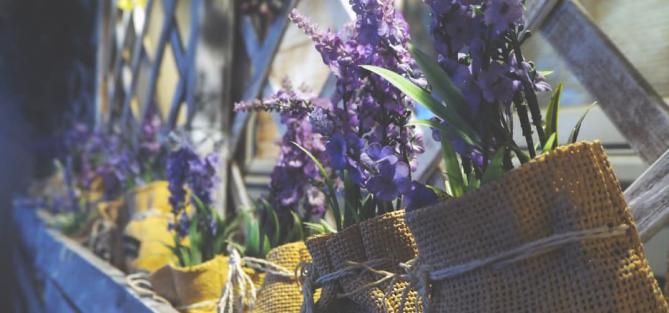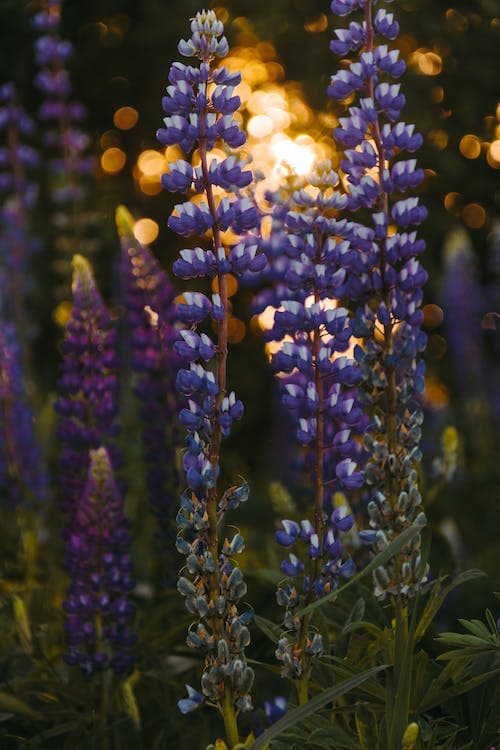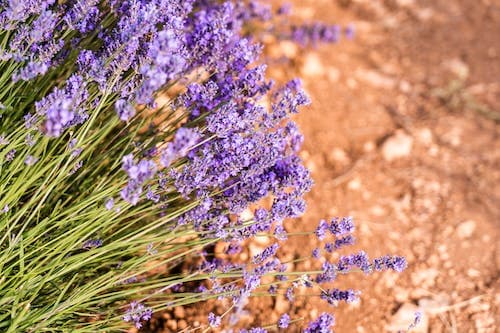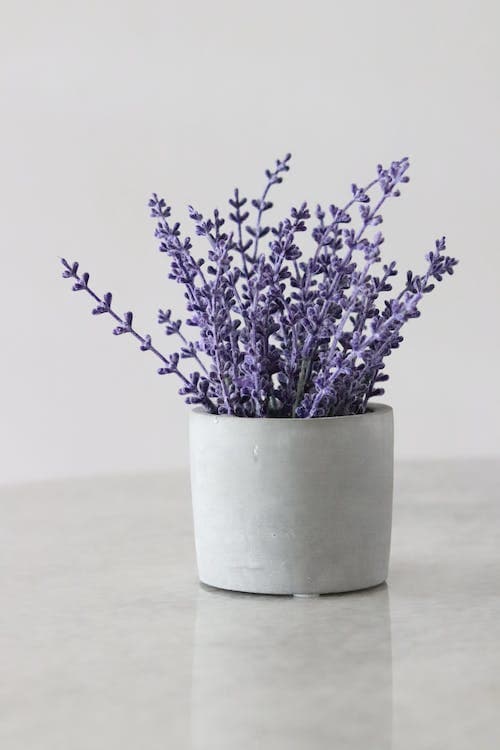MUSEE DE LA LAVANDE LUBERON- 276 Route de Gordes -CS50016- 84220 COUSTELLET
04 90 76 91 23 |

Each day, we share with you our passion for this delicate bleue flower.
Born thousands years ago in the heart of Haute-Provence, it offers us its benefits and all of its charm with its delicious perfume representing south of France.
Contact us for any request or questions, or let yourself be seduced by the organic cosmetics range and niche perfumes we elaborate while having the greatest respect of nature.
Shop le Château du Bois at the Luberon Lavender Museum

When to Plant Lavender in Your Garden?
Lavender is a perennial plant endemic to the dry mountains of Haute-Provence.
Depending on the region, it can be planted at different times of the year. In France, true lavender grows wild at altitudes above 800 m in the South. At your place, you can plant lavender in the ground, in pots, in planters, or in containers according to your preference. Discover how to successfully plant lavender!
Which Lavender Variety to Plant?
Among the most popular and easily accessible varieties, you'll find:
- True lavender or fine lavender, botanical name lavandula angustifolia. It's the best lavender for its fragrance and the quality of its essential oil. Its color ranges from blue to mauve to violet.
Fine lavender is a robust plant but remains quite particular about its terroir. Unless you live in Haute-Provence, it's recommended to opt for a clone. For altitudes below 800 meters, Maillette is a good choice and will be easier to find. A limestone soil that retains little moisture and moderate precipitation will remain crucial factors. Consider watering your lavender a bit more in the first 3 years while the roots establish.

- Spike lavender, or broad-leaved lavender, botanical name lavandula latifolia. Its light blue flowers have a camphoraceous and very green scent due to the high concentration of eucalyptol in its essence. It perfectly withstands drought and negative temperatures and is less capricious than fine lavender.
Lavender is an excellent choice if you live in the southwest at an altitude between 0 and 600 m.
However, it will still prefer a limestone soil, good drainage, and ample sunlight.
- Lavandin, which is a cross between true lavender and spike lavender. It has mauve or blue-violet flowers and a powerful, camphorous scent compared to the fragrance of fine lavender. Very hardy, it's the wisest choice for your garden. In fact, it's the largest of the 3 varieties, adapts to all types of soils, grows between 0 and 800 m in altitude, and withstands negative temperatures well.

When to Plant Lavender in the Ground or in a Pot?
Lavender belongs to the Lamiaceae family. This large family includes many well-known culinary plants: sage, savory, thyme, etc. Additionally, lavender is part of the edible aromatic plants that you can use for cooking.
As you've understood, "lavender" is a generic term that encompasses several different lavender varieties. Here we'll focus on planting lavandin, lavandula hybrida, which is a hybrid lavender between two varieties: fine lavender and spike lavender. It's the most easily available variety and the most sensible choice to plant to enrich your garden, given its size, larger flower spikes, stronger fragrance, and great resilience. Keep in mind that you can't buy lavandin seeds and grow them from seeds as it's a naturally sterile hybrid. Therefore, you'll need to find a lavandin plant to propagate yourself or, more simply, buy cuttings or a plant that you can later propagate to expand your plantation! To plant it in the ground in your garden, wait until the last spring frost. Although this hardy plant doesn't mind the cold much, a young lavender plant wouldn't survive a sudden freeze of its roots.
However, if you live in a region with a mild winter, like in the Mediterranean, you can plant your lavender in the fall.
In fact, it's important to know whether you want to plant in a pot or in the ground. If planting in a pot, it's best to do so in the fall before frost arrives, gaining you almost a year. To plant bare root in the ground, it's best to do so in spring after the last frost.
In your garden, you can place it on a rocky slope, along a trellis, or as a border. At the base of a pergola, you can pair it with climbing roses.
And in a flower bed, why not plant it with yellow or orange-flowered plants like daylilies or sunflowers?

How to Succeed in Planting Lavender?
All lavender varieties appreciate a light and well-draining soil. In clay soils, they prefer rocky
